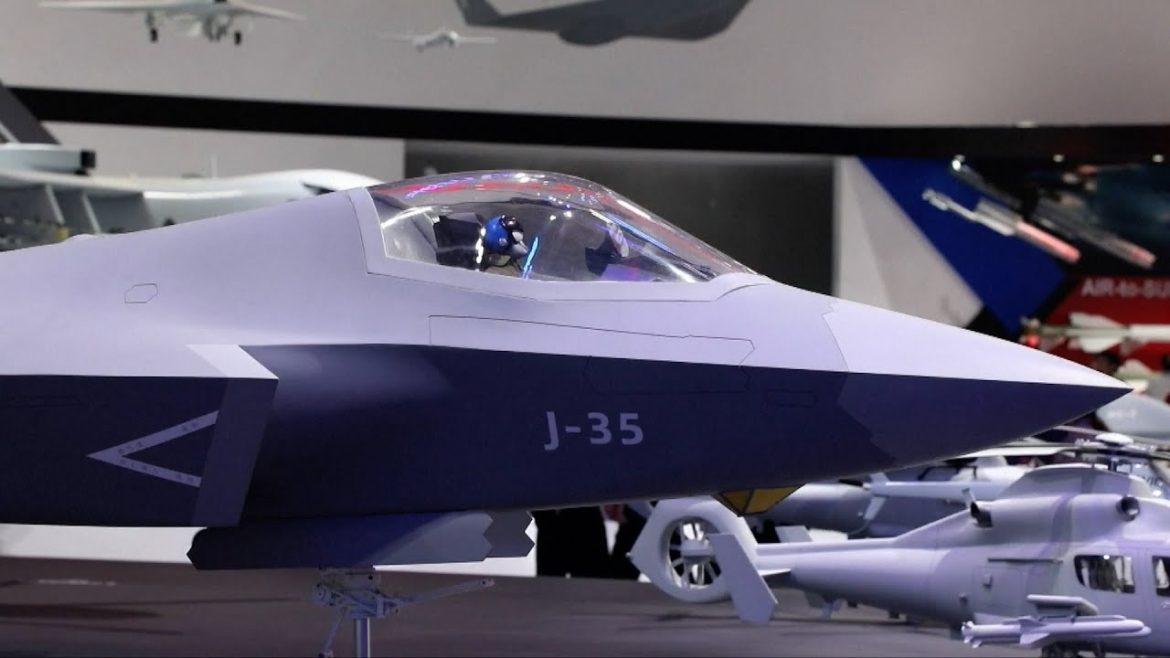Historic Launch from Fujian Aircraft Carrier
China’s state media reported that the J-35 fighter jet took off using an electromagnetic catapult system on the Fujian aircraft carrier, the country’s third and most advanced carrier. Alongside the J‑35, the carrier simultaneously launched J‑15T fighters and the KJ‑600 early warning and control aircraft.
Footage released by Chinese authorities shows the J‑35 rolling down the flight deck of the Fujian carrier before being propelled into the air by the catapult. Experts say these tests demonstrate both an increase in China’s naval aviation capabilities and the Fujian’s ability to launch and recover modern aircraft at levels approaching global standards.
Advancing Naval Aviation Capabilities
This launch is the first time a J‑35 has flown from an aircraft carrier, representing a key step in China’s efforts to modernize its naval air power. The J‑35 is designed as a carrier-based stealth fighter, intended to compete with advanced fighters globally, and is expected to play a crucial role in China’s maritime defense strategy.
Electromagnetic catapults, like those on the Fujian, are a critical advancement over traditional steam catapults. They allow heavier aircraft to be launched more efficiently and with less wear on the aircraft, increasing operational readiness and safety. Analysts note that the simultaneous launch of multiple aircraft types underscores the carrier’s growing operational sophistication.
Fujian: China’s Largest and Most Advanced Carrier
The Fujian is China’s first fully domestically designed aircraft carrier. Unlike the country’s previous carriers, which were based on older Soviet designs, the Fujian is equipped with a full-length electromagnetic catapult system. It is also powered by conventional fuel, making it the largest non-nuclear carrier in the world.
Three advanced electromagnetic catapults on the Fujian allow it to launch heavy aircraft more efficiently, significantly enhancing the carrier’s operational capabilities. This technological leap is seen as bringing China’s carrier fleet closer to the operational standards of the United States and other leading naval powers.
Strategic Implications
The timing of the tests, reportedly conducted in early September, coincided with preparations for a major military parade in Beijing. Experts suggest that the successful demonstration of the J‑35 and other carrier-based aircraft signals China’s ambition to project naval power in the Asia-Pacific region.
While China’s aircraft carriers still lag behind the U.S. Navy in overall numbers and operational experience, the Fujian and its ability to operate modern stealth fighters represent a significant step forward. Analysts believe that such developments will enhance China’s deterrence capabilities and allow for more flexible deployment of air power at sea.
Looking Ahead
The integration of the J‑35 into carrier operations is expected to continue over the coming months, with further testing likely aimed at refining launch and recovery procedures. Observers will be closely watching how these advances translate into operational readiness and potential shifts in regional naval dynamics.
With the Fujian now demonstrating its capacity to handle advanced aircraft, China is moving closer to establishing a fully modern carrier strike group, capable of extended operations far from its shores. The ongoing development of stealth fighters and advanced carrier technology signals Beijing’s commitment to strengthening its maritime reach in the coming decade.















